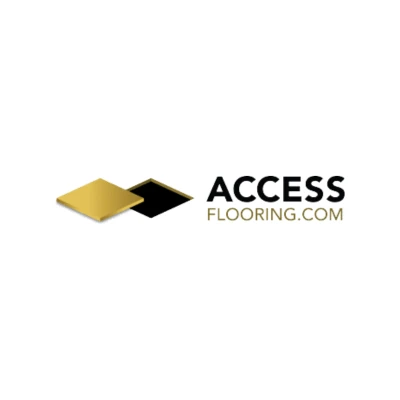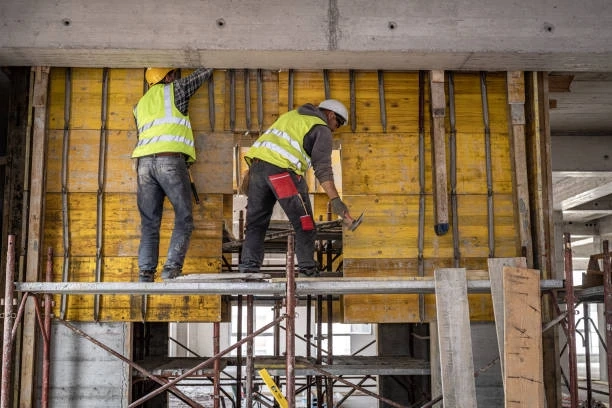In modern construction, the role of pedestals is pivotal in creating flexible, efficient, and sustainable spaces. Among their varied applications, access flooring pedestals stand out as essential components of raised flooring systems, providing a foundation for managing underfloor services. This article delves into the design, functions, and uses of pedestals in construction, with a focus on their application in access flooring, ensuring you gain a comprehensive understanding of their significance in contemporary building projects.
What Are Pedestals in Construction?
Pedestals are structural supports used to elevate and stabilise materials or surfaces above a base level. In construction, they serve various purposes, ranging from supporting architectural features to creating accessible spaces for concealed utilities. When it comes to access flooring pedestals, they are designed to support raised floor panels, allowing for the efficient management of cables, ductwork, and other building services beneath the surface.
The Design of Access Flooring Pedestals
The design of access flooring pedestals combines precision engineering with durable materials to ensure stability, load-bearing capacity, and adaptability.
Key Components of Pedestal Design:
- Base Plate:
- The base plate is the foundation of the pedestal, securing it to the subfloor. It is usually made of galvanised steel or aluminium for corrosion resistance and durability.
- Adjustable Stem:
- The adjustable stem connects the base plate to the head and is designed to allow height modifications. This feature makes pedestals adaptable to uneven subfloors and varying floor heights.
- Head:
- The head is the top component that supports the floor panel. It is often equipped with sound-dampening pads to minimise noise and improve stability.
- Locking Mechanism:
- Many pedestals include a locking mechanism to secure the height adjustments, ensuring the system remains stable over time.
Material Considerations:
Access flooring pedestals are typically manufactured from high-strength materials like galvanised steel, aluminium, or composite materials. These materials offer excellent resistance to corrosion, wear, and environmental factors, making them suitable for diverse applications.
Functions of Access Flooring Pedestals
The primary function of access flooring pedestals is to support and elevate floor panels, creating a raised floor system. However, their utility extends far beyond simple elevation.
1. Cable and Utility Management:
One of the most significant benefits of access flooring pedestals is their ability to conceal and organise building services, such as electrical wiring, data cables, and HVAC ductwork. This not only improves aesthetics but also facilitates easy access for maintenance and upgrades.
2. Load Distribution:
Pedestals are engineered to evenly distribute the weight of the raised floor panels and any loads placed on them. This ensures structural stability and safety in high-traffic or heavy-load areas.
3. Flexibility in Design:
With adjustable height options, pedestals allow for customised floor heights to accommodate specific project requirements, whether it’s for a small office or a large data centre.
4. Acoustic and Thermal Benefits:
Access flooring pedestals can be integrated with sound-dampening and thermal insulation features, enhancing the comfort and energy efficiency of the space.
Common Uses of Access Flooring Pedestals
Access flooring pedestals are versatile and find application in various sectors. Here are some of the most common uses:
1. Commercial Offices:
In offices, access flooring pedestals facilitate the organisation of cables and electrical systems, creating a clutter-free and professional environment. The flexibility offered by pedestals supports changes in office layouts and technological upgrades.
2. Data Centres:
Data centres rely heavily on access flooring pedestals to create a raised floor system that allows for efficient cooling, cable management, and easy maintenance of IT infrastructure. The adjustable height feature helps in achieving optimal airflow for equipment cooling.
3. Retail Spaces:
Retail environments use access flooring pedestals to conceal utility lines and enhance the aesthetic appeal of the space. Pedestals also enable quick reconfiguration of layouts to adapt to changing business needs.
4. Educational Institutions:
Universities and schools use access flooring pedestals in lecture halls, computer labs, and libraries to manage wiring and ensure a safe environment for students and staff.
5. Healthcare Facilities:
In hospitals and clinics, pedestals support raised flooring systems that house critical services like medical gas lines, electrical systems, and IT networks. The accessibility provided by pedestals ensures quick maintenance and minimal disruption in essential services.
Benefits of Access Flooring Pedestals
Access flooring pedestals offer a range of benefits that make them indispensable in modern construction.
1. Easy Installation and Maintenance:
The modular nature of pedestals and raised floor systems allows for quick installation and easy access to underfloor services for repairs or upgrades.
2. Improved Space Efficiency:
By concealing utilities beneath the floor, pedestals maximise usable space and reduce visual clutter, creating cleaner and more functional environments.
3. Enhanced Safety:
Pedestals eliminate the need for exposed cables and ducts, reducing tripping hazards and improving overall safety in the workspace.
4. Sustainability:
Many pedestals are made from recyclable materials and support the integration of energy-efficient systems, contributing to sustainable construction practices.
5. Adaptability:
Adjustable pedestals accommodate various floor heights, making them suitable for diverse applications and future-proofing buildings for technological advancements.
Challenges in Using Access Flooring Pedestals
While access flooring pedestals offer numerous advantages, there are a few challenges to consider:
1. Initial Cost:
The installation of access flooring pedestals can be more expensive upfront compared to traditional flooring systems. However, their long-term benefits often outweigh the initial investment.
2. Weight Limitations:
Although pedestals are designed to support heavy loads, exceeding their specified weight capacity can compromise stability and safety.
3. Maintenance of Components:
Regular inspections are necessary to ensure the integrity of the pedestals, especially in high-traffic or heavy-load areas.
Future Trends in Access Flooring Pedestals
The construction industry continues to evolve, and access flooring pedestals are no exception. Emerging trends include:
1. Smart Pedestals:
Innovative designs are incorporating sensors into pedestals to monitor load distribution, temperature, and other environmental factors in real time.
2. Sustainable Materials:
As sustainability becomes a priority, manufacturers are exploring eco-friendly materials for pedestal production, reducing their carbon footprint.
3. Advanced Adjustability:
Next-generation pedestals are being designed with enhanced adjustability features, allowing for greater precision and ease of use.
Conclusion
Access flooring pedestals play a crucial role in modern construction, offering unparalleled flexibility, efficiency, and functionality. From supporting raised floor systems in commercial offices to housing critical utilities in data centres, their applications are vast and varied. By understanding their design, functions, and uses, you can appreciate their value in creating adaptable and sustainable spaces.
Whether you’re planning a new construction project or upgrading an existing facility, investing in high-quality access flooring pedestals ensures a durable and efficient solution that meets the demands of today’s dynamic environments.


